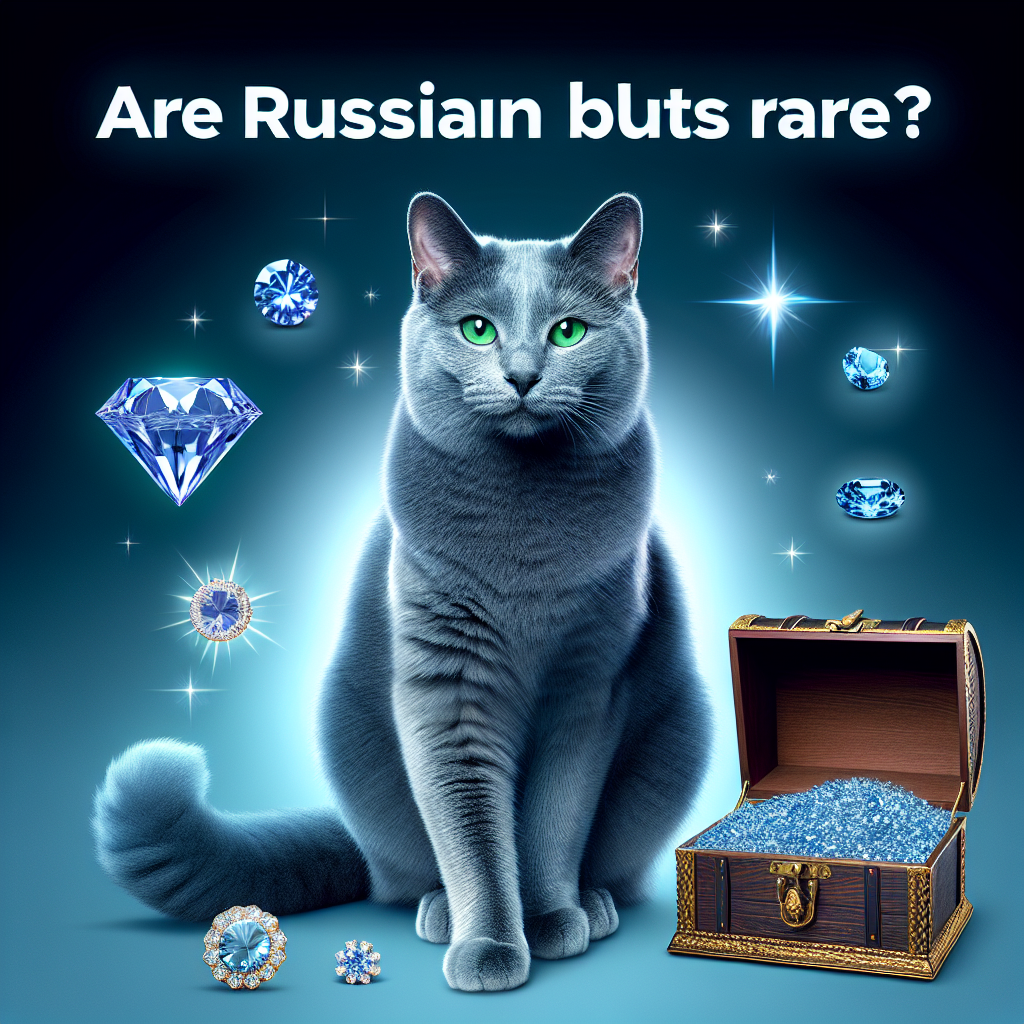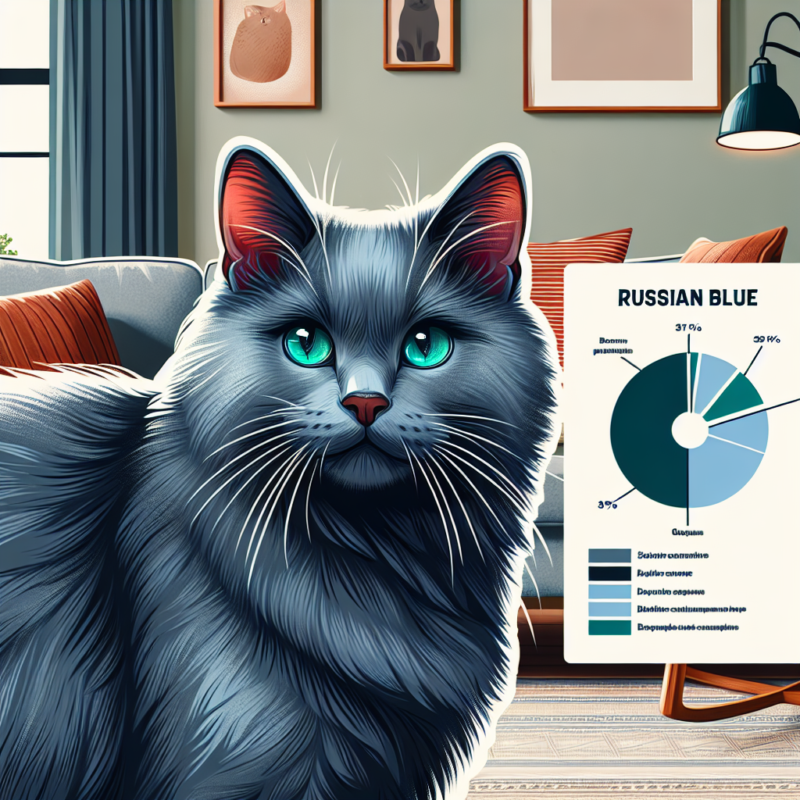Blog
are russian blue cats rare
The Fascinating History of Russian Blue Cats: From Royalty to Rarity

The Russian Blue cat is a breed that has captured the hearts of many cat lovers around the world. With their striking blue-grey coat, emerald green eyes, and elegant demeanor, it’s no wonder that these felines are highly sought after. But are Russian Blue cats truly rare? In this article, we will delve into the fascinating history of this breed and explore the reasons behind its perceived rarity.
The origins of the Russian Blue cat can be traced back to the port city of Arkhangelsk, located in the northern region of Russia. It is believed that these cats were brought to Europe by sailors in the 1860s, where they quickly gained popularity among the aristocracy. In fact, it is said that Queen Victoria of England was a proud owner of a Russian Blue cat, further solidifying its status as a royal pet.
During this time, the breed was known as the Archangel cat, named after the city where they were first discovered. However, as their popularity spread, they became known as the Russian Blue due to their distinctive coat color. This blue-grey hue is caused by a dilution gene, which gives their fur a shimmering silver appearance.
Despite their regal beginnings, the Russian Blue cat faced a decline in popularity during the early 20th century. The Russian Revolution and World War II had a significant impact on the breed, with many cats being lost or killed during these tumultuous times. It wasn’t until the 1960s that the breed was reintroduced to the United States, where it quickly gained a following among cat enthusiasts.
Today, the Russian Blue cat is recognized as a rare breed by many cat associations, including The International Cat Association (TICA) and the Cat Fanciers’ Association (CFA). However, this rarity is not due to a lack of breeding or availability, but rather the strict standards set by these associations for the breed’s registration.
To be considered a purebred Russian Blue, a cat must have a pedigree that can be traced back to the original cats brought from Russia. This means that only a select few breeders are able to produce registered Russian Blue kittens, making them a highly coveted and exclusive breed.
Furthermore, the breeding process for Russian Blue cats is a delicate one. These cats are known for their gentle and affectionate nature, but they can also be quite shy and reserved. As such, breeders must carefully select and pair cats with the right temperament to ensure the best possible offspring. This selective breeding process can also contribute to the perceived rarity of the breed.
Another factor that adds to the rarity of Russian Blue cats is their low birth rate. Unlike other breeds that can produce large litters, Russian Blues typically have smaller litters, with an average of 3-4 kittens per litter. This, combined with the breed’s popularity, can make it challenging to find a Russian Blue kitten for sale.
In conclusion, while Russian Blue cats may be considered rare by some, their rarity is not due to a lack of breeding or availability. Instead, it is a result of their exclusive registration standards, selective breeding process, and low birth rate. These factors, combined with their fascinating history and striking appearance, make the Russian Blue cat a truly unique and highly coveted breed.
Uncovering the Mystery of Russian Blue Cats: Genetics, Characteristics, and Popularity
Russian Blue cats have long been a subject of fascination and mystery among cat lovers. With their striking silver-blue coat, emerald green eyes, and regal demeanor, it’s no wonder that these felines have captured the hearts of many. But are Russian Blue cats truly rare, or is their perceived rarity just a myth? In this article, we will delve into the genetics, characteristics, and popularity of Russian Blue cats to uncover the truth behind their enigmatic reputation.
First and foremost, let’s address the question at hand: are Russian Blue cats rare? The answer is both yes and no. In terms of numbers, Russian Blue cats are not as common as other breeds such as the Persian or Siamese. However, they are not considered a rare breed by any means. In fact, according to the Cat Fanciers’ Association (CFA), Russian Blue cats rank 13th in popularity out of 44 breeds recognized by the organization. This indicates that while they may not be as widespread as some other breeds, they are still quite popular among cat owners.
So why do Russian Blue cats have a reputation for being rare? One reason could be their distinct appearance. The silver-blue coat of a Russian Blue cat is a result of a dilution gene, which gives them their unique color. This gene is recessive, meaning that both parents must carry it for their offspring to inherit the distinctive coat. This makes it less likely for Russian Blue cats to be born compared to other breeds with dominant coat genes. Additionally, the breeding process for Russian Blue cats can be quite selective, with breeders carefully choosing which cats to mate in order to maintain the breed’s desirable characteristics. This can also contribute to the perception of their rarity.
Now that we have established the truth behind the rarity of Russian Blue cats, let’s take a closer look at their genetics. As mentioned earlier, the dilution gene is responsible for the silver-blue coat of Russian Blue cats. This gene also affects the color of their eyes, giving them their signature bright green hue. Interestingly, Russian Blue cats are born with yellow eyes, which gradually change to green as they mature. This is due to the presence of a yellow pigment in their eyes that fades over time, revealing the green color underneath.
Aside from their distinctive coat and eye color, Russian Blue cats are also known for their elegant and graceful appearance. They have a lean and muscular body, with long legs and a long, tapering tail. Their head is wedge-shaped, with large, pointed ears and a straight nose. These physical characteristics, combined with their striking coat, give Russian Blue cats a regal and aristocratic look.
In terms of personality, Russian Blue cats are known for their intelligence, playfulness, and affectionate nature. They are highly social and enjoy the company of their owners, often following them around the house and even learning to play fetch. They are also known for their quiet and gentle demeanor, making them great companions for families with children or other pets.
In conclusion, while Russian Blue cats may not be as common as some other breeds, they are by no means a rare breed. Their unique appearance, genetics, and popularity have contributed to their enigmatic reputation. Whether you are a fan of their striking looks or their loving personality, one thing is for sure – Russian Blue cats are truly one-of-a-kind.

